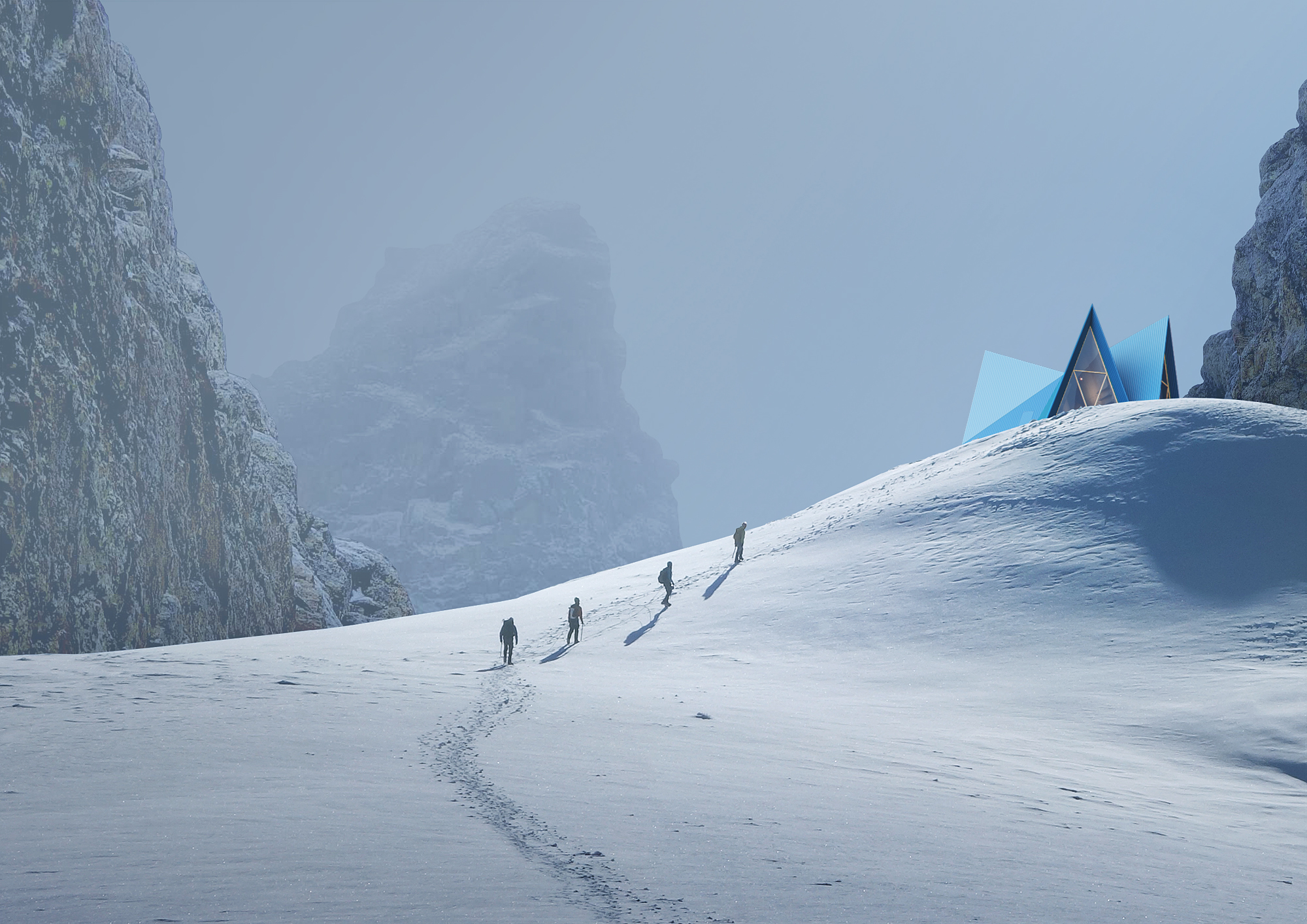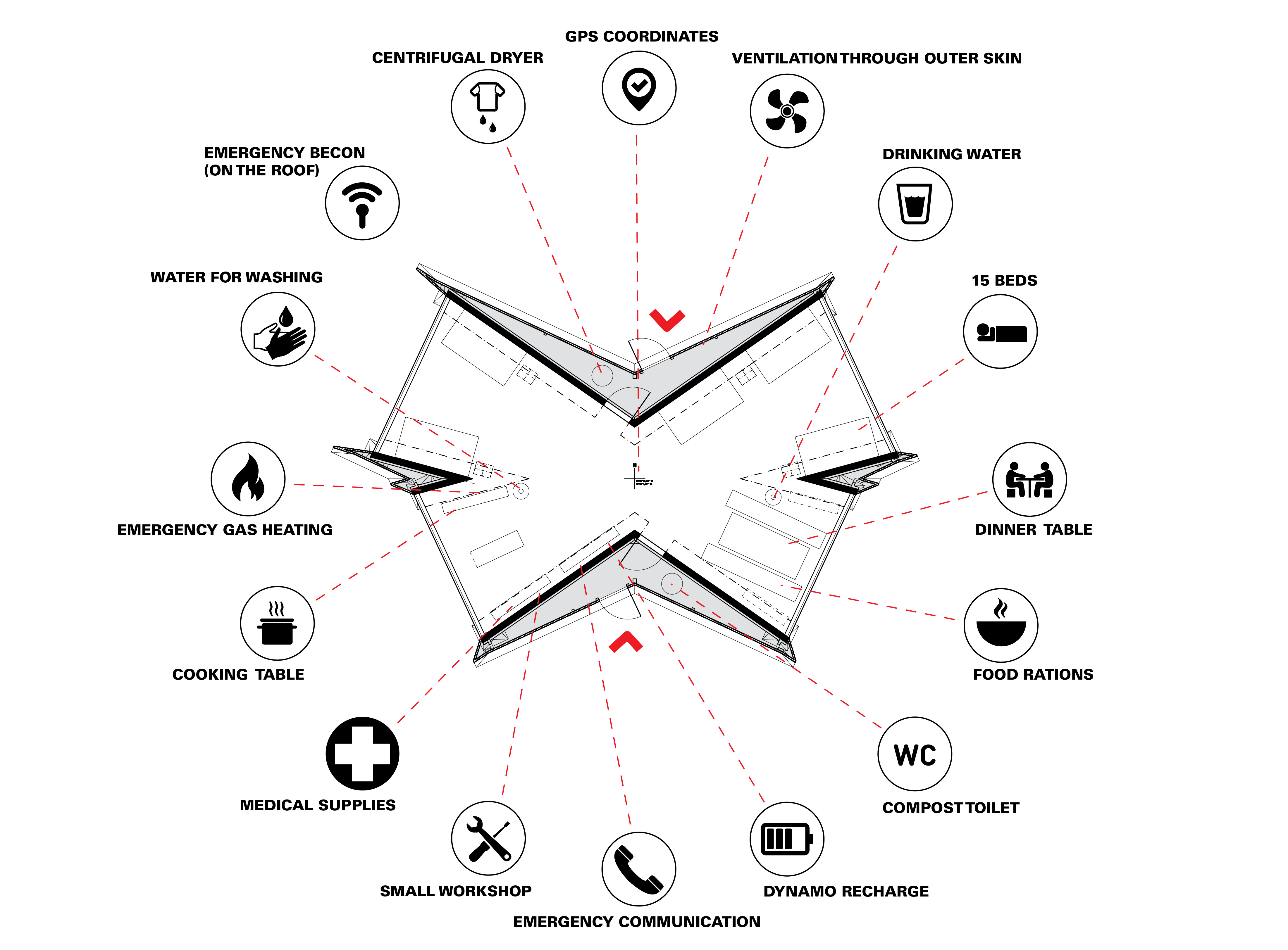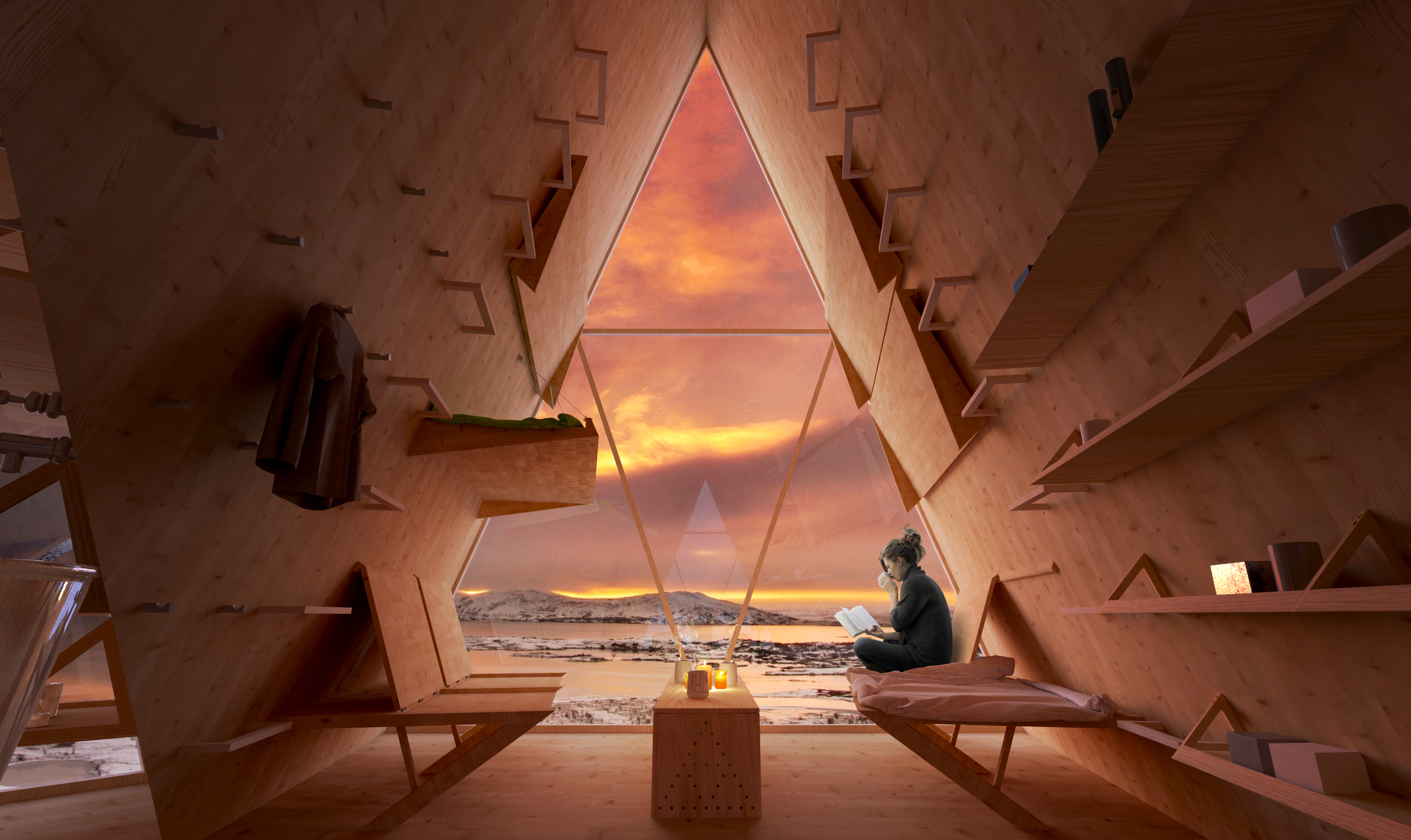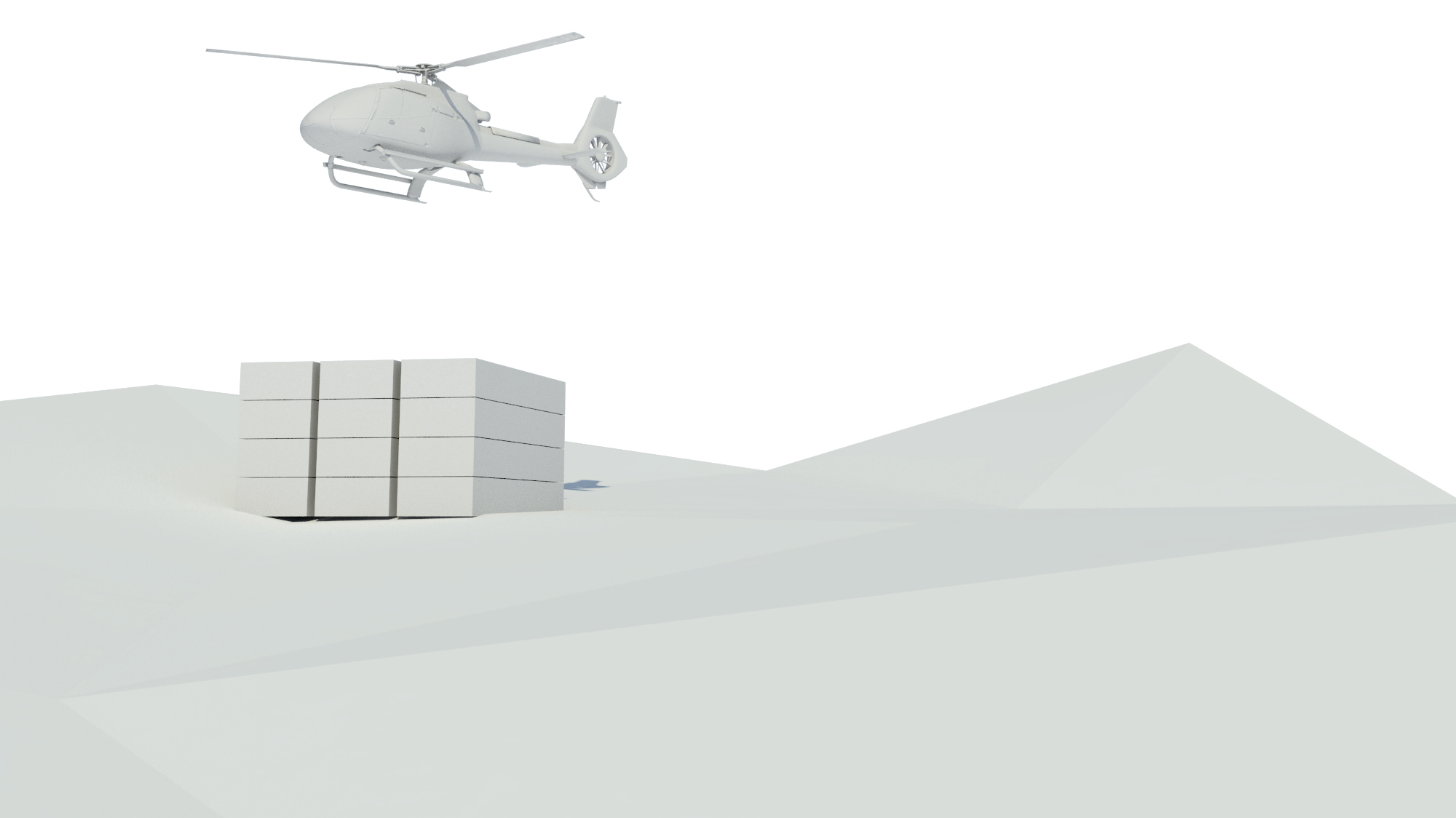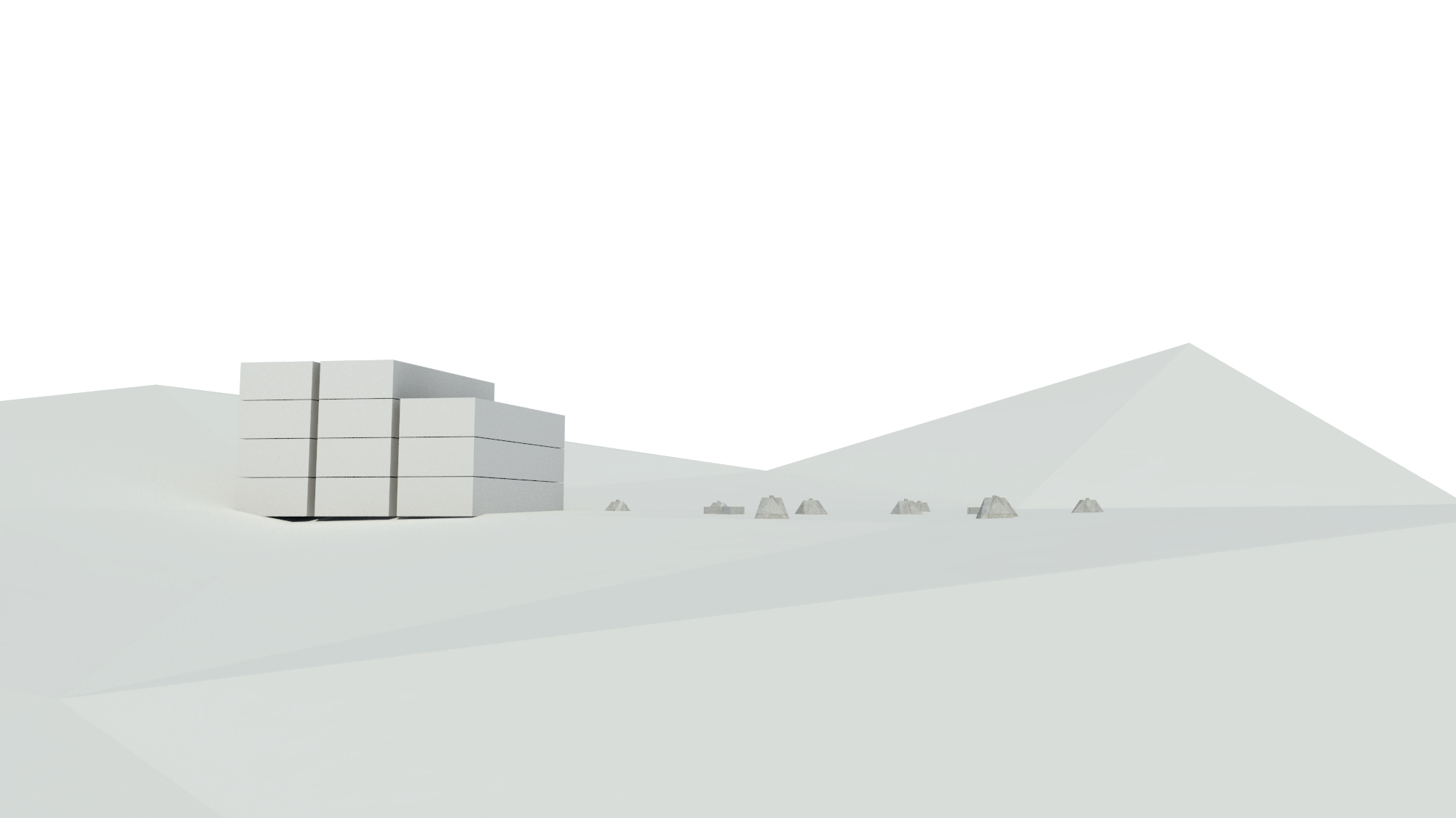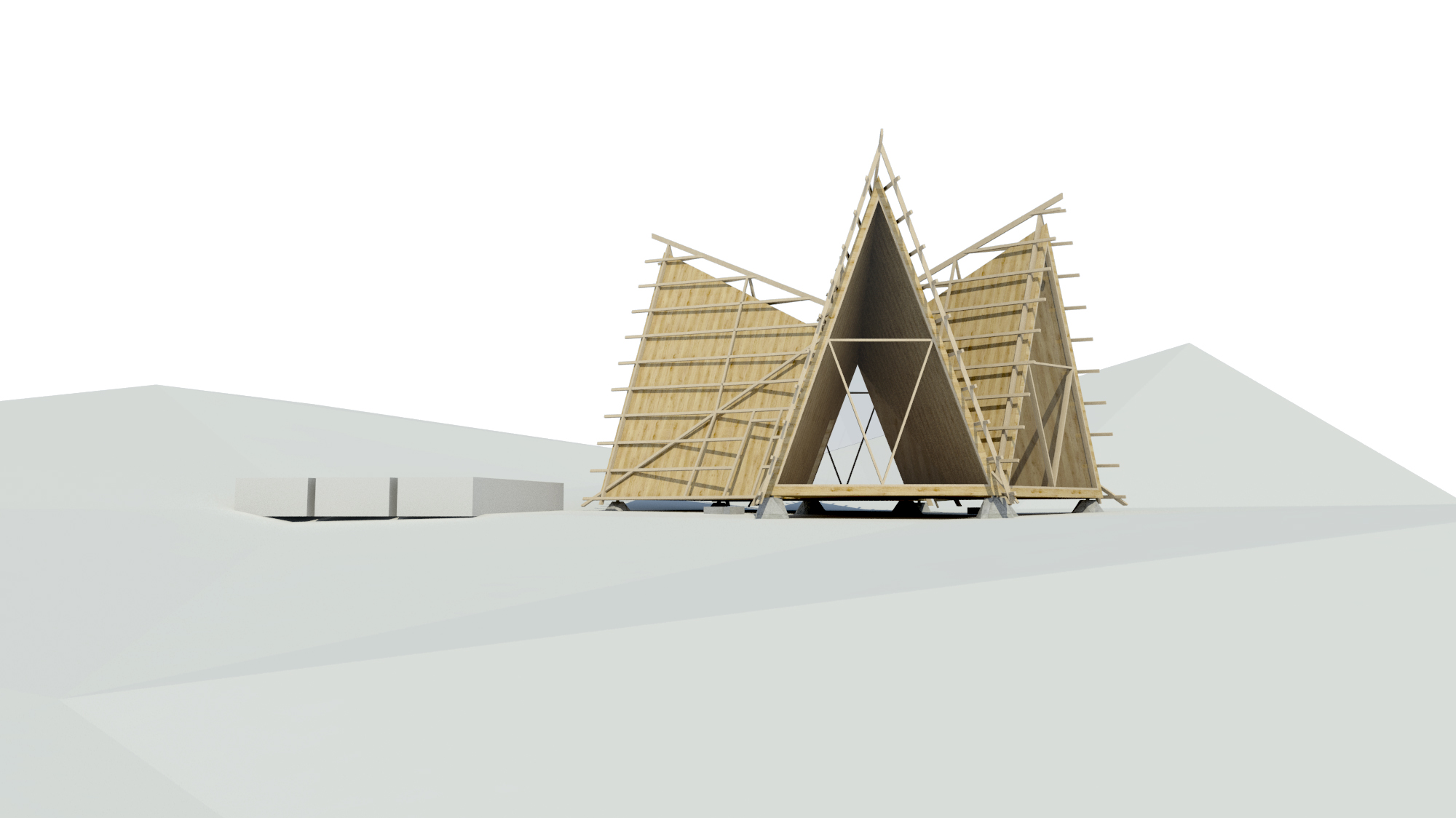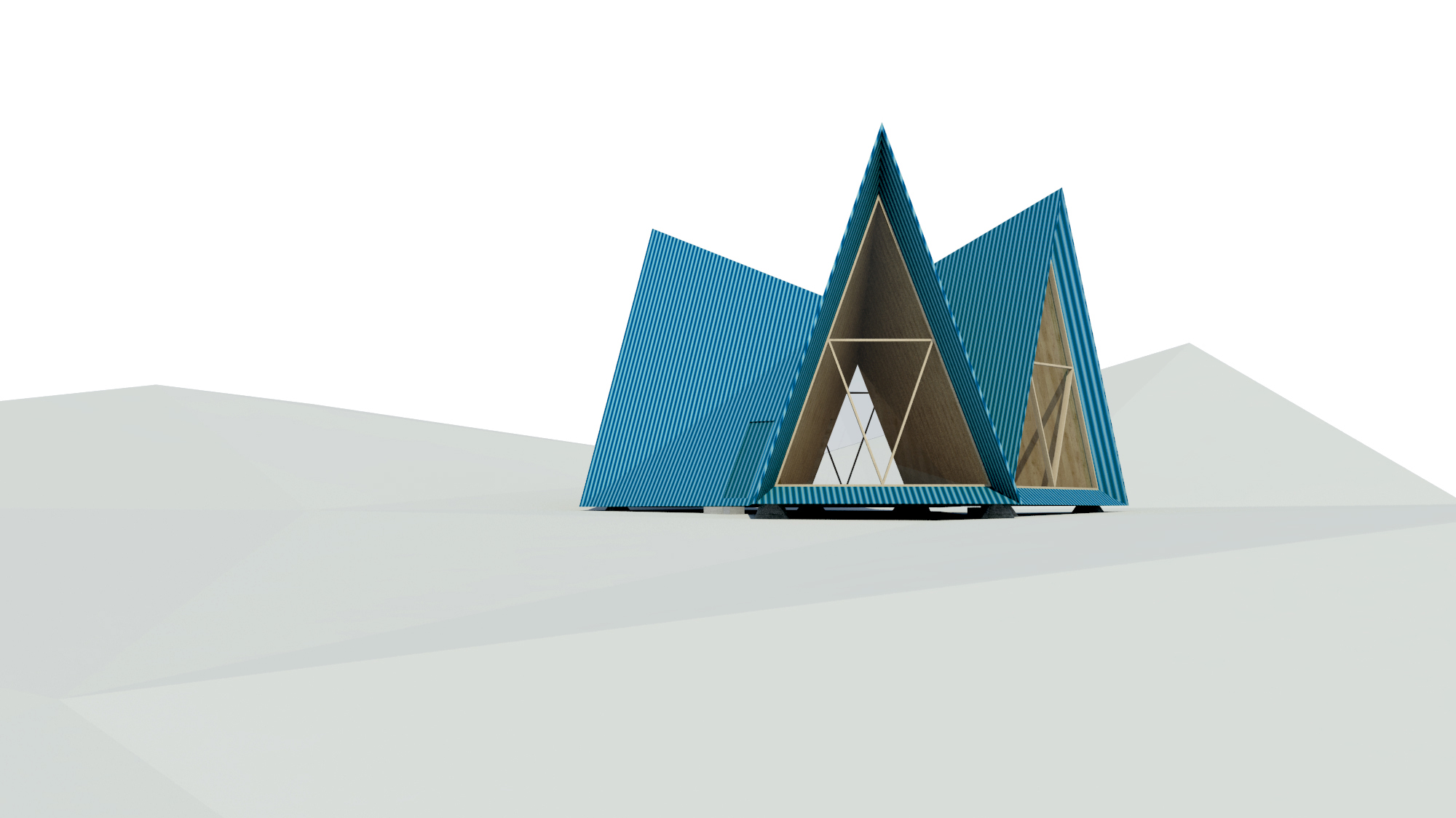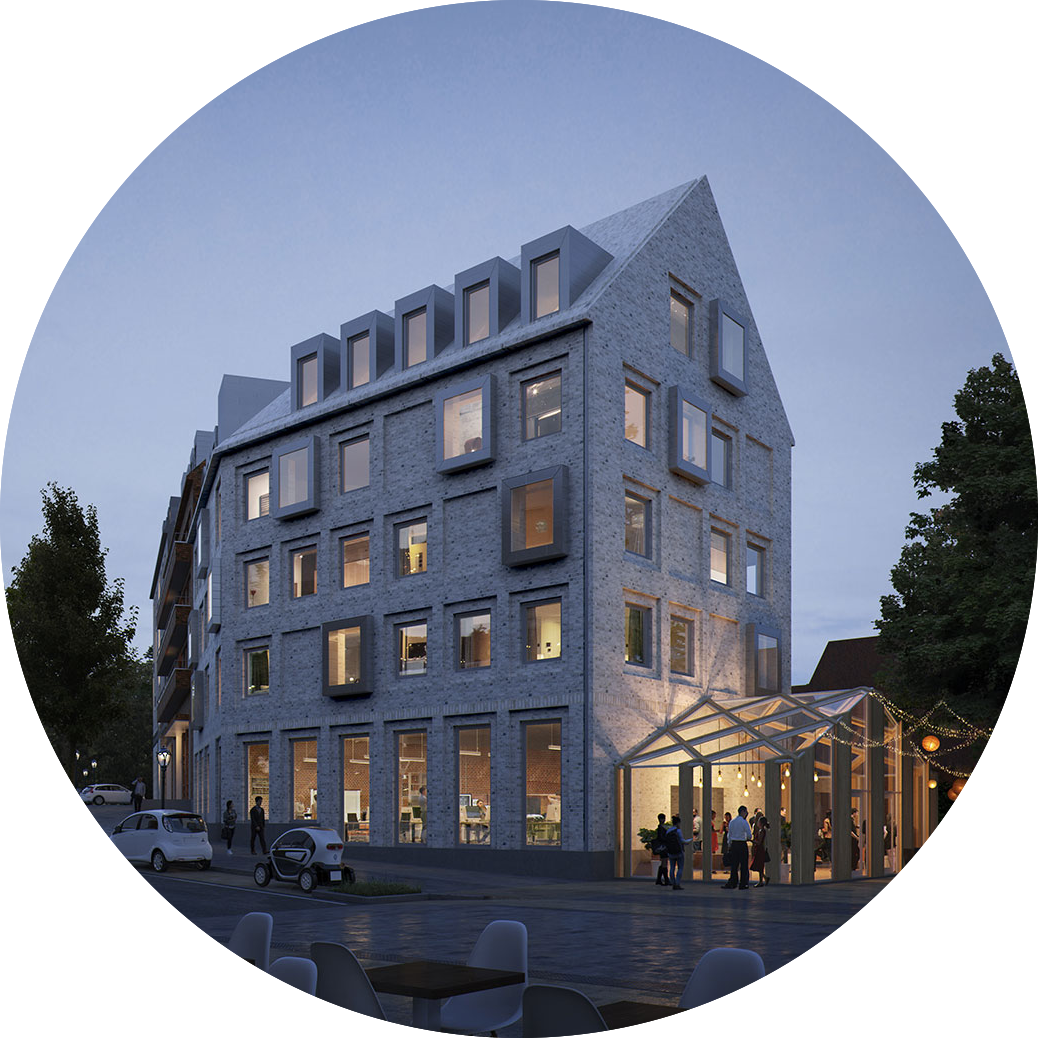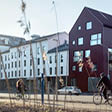Skýli has two entries to be placed facing north and south respectively so that one will always be better protected from the wind. The doors are placed in the inward slanted outer shell so that they will automatically close and stay closed.
The space between the outer and inner skin create two additional rooms, one to wring out and dry clothes and one to house a compost toilet (such as a Clivus Multum or Separett).
Skýli has four activity areas: two for rest and sleep, one for cooking, mending and communication, and one for eating and storing emergency supplies. Benches to sleep on fold out from the walls. The lowest benches in each area sleep two people and can also be used as sofas. If necessary the cabin sleeps a total of 15 people, but the additional bunk beds also functions as extra storage space.
Tables, cupboards and benches are custom made, designed to fit in flat packs for easy transport and assembly. Hooks to hang supplies and gear are placed along the walls. On the floor at the center of the cabin a compass is printed for basic orientation.
In an emergency situation trekkers will be able to rest, find food supplies as well as first aid and basic medical equipment. The cabin has a solar panel and a battery for limited energy storage. The energy generated will cover basic needs for lighting, charging of phones etc during periods with enough sunlight. In bad weather when the solar panel and battery is not sufficient, light, electricity and satellite communication devices can be charged by a hand crank generator.
Rainwater collected from the roof is filtered into self-draining containers in the outer shell and supplies the cabin with water that can be used for washing, and once purified, cooking and drinking.
Heating is generated by the people inhabiting the cabin. Small manually regulated vents will be installed throughout the 4 areas. The cooking facility is powered by LPG and the gas can also be used for heating when needed.
By using IoT devices the status of supplies and facilities can be checked remotely ensuring that deliveries and servicing only has to happen when necessary and when weather conditions are favourable.
When help is needed a red alert lamp mounted on the roof can be switched on with the help of a hand crank generator regulated from within the cabin.


